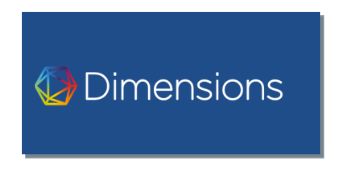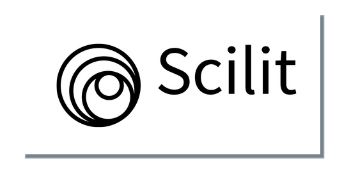Clinicopathological Profile of Meningioma in Anatomic Pathology Department Saiful Anwar General Hospital Malang Period 2016-2020
DOI:
https://doi.org/10.11594/jk-risk.02.3.3Keywords:
intracranial neoplasm, histopathological characteristic, meningiomaAbstract
Background. The most common intracranial neoplasms worldwide is meningioma. It has been classified into three grades by World Health Organization (WHO) in which each grade has several histological variants. The prognosis of meningioma is affected by many factors including histopathological type of tumor, age, and gender.
Objective. The aim of this study is to determine the frequency of meningioma based on histopathological type, age, and gender from 2016 to 2020 in Saiful Anwar General Hospital Malang.
Methods. This study was a quantitative descriptive study and data was collected from medical records from 2016 to 2020 in Department of Anatomic Pathology, Medical Faculty, Brawijaya University, Saiful Anwar General Hospital Malang. Histopathological type of meningioma, age, and gender were acquired.
Results and Discussion. From 2016 to 2020, there were 96 eligible cases of meningioma. Ratio of men to women was 1:12.7. Meningioma was most commonly found in age group 4150 years old (43.75%). The most common histopathological type of meningioma was meningotheliomatous meningioma (37.5%). The average of meningioma cases was 19 per year. In this study, there was an increase in incidence rate of meningioma in 2017, and decreased in 2020. It may happen because The government has a better referral system to provide health care, thus meningioma can be detected earlier.
Conclusion. Frequency of meningioma is higher in women than men, and increases with age until 50 years, which then decreases. Meningotheliomatous meningioma is the most common histopathological type in this study.
Downloads
References
Walsh KM. Epidemiology of meningiomas [Internet]. 1st ed. Vol. 169, Handbook of Clinical Neurology. Elsevier B.V.; 2020. 3–15 p. Available from: http://dx.doi.org/10.1016/B978-0-12-804280-9.00001-9
Champeaux-Depond C, Constantinou P, Weller J. Cause-Specific Survival After Meningioma Surgery: A Nationwide Population-Based Competing Risk Study. World Neurosurg [Internet]. 2021;146(November):e67–75. Available from: https://doi.org/10.1016/j.wneu.2020.10.012
Wahyuhadi J, Heryani D, Basuki H. Risk of meningioma associated with exposure of hormonal contraception. A case control study. Maj Obstet Ginekol. 2018;26(1):36.
Liu D. Tumors of the Cranial and Paraspinal Nerves. Tumors and Cancers. 2018. 139–158 p.
Champeaux C, Weller J, Katsahian S. Epidemiology of meningiomas. A nationwide study of surgically treated tumours on French medico-administrative data. Cancer Epidemiol [Internet]. 2019;58(May 2018):63–70. Available from: https://doi.org/10.1016/j.canep.2018.11.004.
Buerki RA, Horbinski CM, Kruser T, Horowitz PM, James CD, Lukas R V. An overview of meningiomas. Futur Oncol. 2018;14(21):2161–77.
Baldi I, Engelhardt J, Bonnet C, Bauchet L, Berteaud E, Grüber A, et al. Epidemiology of meningiomas. Neurochirurgie [Internet]. 2018;64(1):5–14. Available from: http://dx.doi.org/10.1016/j.neuchi.2014.05.006.
Maiuri F, Mariniello G, Somma T, Guadagno E, Corvino S, Pagano S, et al. Meningiomas in Premenopausal Women: Role of the Hormone Related Conditions. Front Oncol. 2020; 10(December):1–8.
Claus EB, Park PJ, Carroll R, Chan J, Black PM. Specific genes expressed in association with progesterone receptors in meningioma. Cancer Res. 2008;68(1):314–22.
Ogasawara C, Philbrick BD, Adamson DC. Meningioma: A review of epidemiology, pathology, diagnosis, treatment, and future directions. Biomedicines. 2021;9(3).
Buerki RA, Horbinski CM, Kruser T, Horowitz PM, James CD, Lukas R V. An overview of meningiomas. Futur Oncol. 2018;14(21):2161–77.
Rogers L, Barani I, Chamberlain MC et al. Meningiomas: knowledge base, treatment outcomes, and uncertainties. a RANO review. J. Neurosurg. 122(1), 4–23 (2015).
Ostrom QT, Gittleman H, Xu J et al. CBTRUS statistical report: primary brain and other central nervous system tumors diagnosed in the United States in 2009–2013. Neuro-oncology 18(Suppl. 5), v1–v75 (2016).
Maiuri F, Mariniello G, Somma T, Guadagno E, Corvino S, Pagano S, et al. Meningiomas in Premenopausal Women: Role of the Hormone Related Conditions. Front Oncol. 2020;10(December):1–8.
Claus EB, Calvocoressi L, Bondy ML, Wrensch M, Wiemels JL, Schildkraut JM. Exogenous hormone use, reproductive factors, and risk of intracranial meningioma in females. J Neurosurg (2013) 118(3):649–56. doi: 10.3171/2012.9.JNS12811.
Benson VS, Kirichek O, Beral V, Green J. Menopausal hormone therapy and central nervous system tumor risk: large UK prospective study and metaanalysis. Int J Cancer (2015) 136(10):2369–77. doi: 10.1002/ijc.29274.
Harland TA, Freeman JL, Davern M, McCracken DJ, Celano EC, Lillehei K, et al. Progesterone-only contraception is associated with a shorter progression-free survival in premenopausal women with WHO Grade I meningioma. J Neurooncol (2018) 136(2):327–33. doi: 10.1007/s11060-017-2656-9.
Qi ZY, Shao C, Huang YL, Hui GZ, Zhou YX, Wang Z. Reproductive and exogenous hormone factors in relation to risk of meningioma in women: a meta-analysis. PLoS One (2013) 8(12):e83261. doi: 10.1371/journal.pone.0083261
Chakravarthy V, Kaplan B, Gospodarev V, Myers H, De Los Reyes K, Achiriloaie A. Houdini Tumor: Case Report and Literature Review of Pregnancy-Associated Meningioma. World Neurosurg (2018) 114:e1261–5. doi: 10.1016/j.wneu.2018.03.187.
Louis DN, Perry A, Reifenberger G et al. The 2016 World Health Organization classification of tumors of the central nervous system: a summary. Acta Neuropathologica 131(6), 803–820 (2016).
Baldi I, Engelhardt J, Bonnet C, Bauchet L, Berteaud E, Grüber A, Loiseau H. (2018). Epidemiology of meningiomas. Neurochirurgie 64(1):5-14. doi: 10.1016/j.neuchi.2014.05.006 .
Walcott BP, Nahed BV, Brastianos PK, Loeffler JS. (2013) Radiation Treatment for WHO Grade II and III Meningiomas. Front Oncol 3:227. doi: 10.3389/fonc.2013.00227.
Goldbrunner R, Minniti G, Preusser M, Jenkinson MD, Sallabanda K, Houdart E, von Deimling A, Stavrinou P, Lefranc F, Lund-Johansen M, Moyal EC, Brandsma D, Henriksson R, Soffietti R, Weller M. (2016) EANO guidelines for the diagnosis and treatment of meningiomas. Lancet Oncol 17(9):e383-91. doi: 10.1016/S1470-2045(16)30321-7.
Zouaoui S, Darlix A, Rigau V, et al. Descriptive epidemiology of 13,038 newly diagnosed and histologically confirmed meningiomas in France: 2006–2010. Neurochirurgie. 2015 Jun 11.
Saraf S, McCarthy BJ, Villano JL. Update on meningiomas. Oncologist. 2011;16:1604–1613.
Bowers DC, Moskowitz CS, Chou JF, et al. Morbidity and mortality associated with meningioma after cranial radiotherapy: a report from the childhood cancer survivor study. JCO. 2017;35:1570–1576.
Caroline Apra, Matthieu Peyre, Michel Kalamarides. Current treatment options for meningioma. Expert Review of Neurotherapeutics, Expert Reviews (formerly Future Drugs), 2018, 18 (3), pp.241-249. 10.1080/14737175.2018.1429920. hal-01992074.
Luca N, Roada B, Valeria B, Riccardo D, Giuseppe N, Claudio G, Niccol`o G-Levra, Marco C, Sessa F, Vanessa F, Filippo A, Resected atypical meningioma relapsed to anaplastic meningioma during luteinizing hormone-releasing hormone agonist therapy, Neurochirurgie (2020), doi: https://doi.org/10.1016/j.neuchi.2020.10.002.
Kim D, Niemierko A, Hwang WL, et al. Histopathological prognostic factors of recurrence following definitive therapy for atypical andmalignant meningiomas. J Neurosurg. 2017 Jun 16:1–10.
Kessler RA, Garzon-Muvdi T, Yang W, et al. Metastatic atypical and anaplastic meningioma: a case series and review of the literature. World Neurosurg. 2017;101:47–56.
Downloads
Published
Issue
Section
License
Authors who publish with this journal agree to the following terms:
- Authors retain copyright and grant the journal the right of first publication with the work simultaneously licensed under a Creative Commons Attribution License that allows others to share the work with an acknowledgement of the work's authorship and initial publication in this journal.
- Authors can enter into separate, additional contractual arrangements for the non-exclusive distribution of the journal's published version of the work (e.g., post it to an institutional repository or publish it in a book), with an acknowledgement of its initial publication in this journal.
- Authors are permitted and encouraged to post their work online (e.g., in institutional repositories or on their website) before and during the submission process, as it can lead to productive exchanges and earlier and greater citation of published work (See The Effect of Open Access).
















